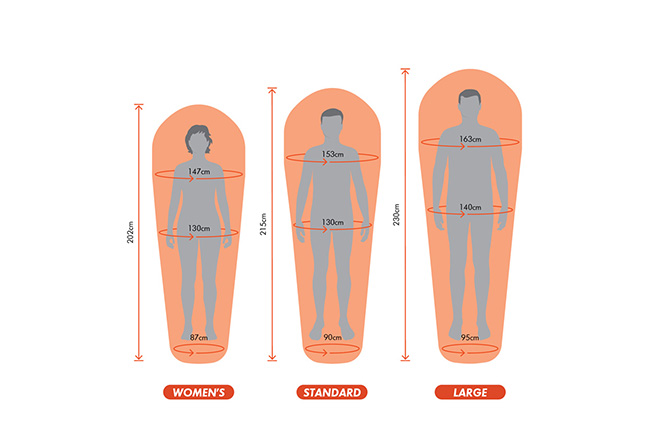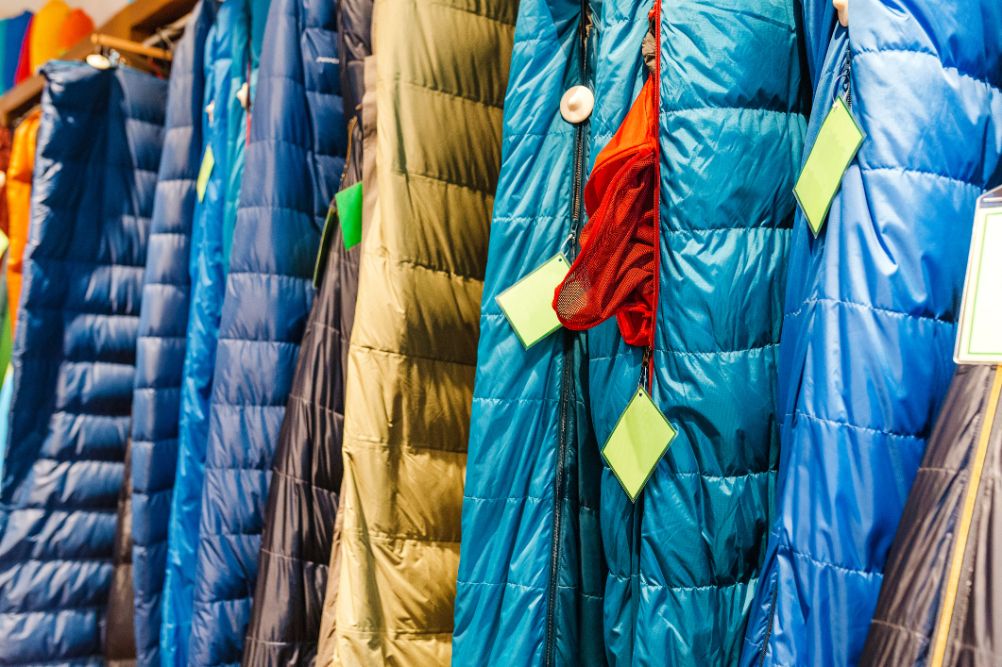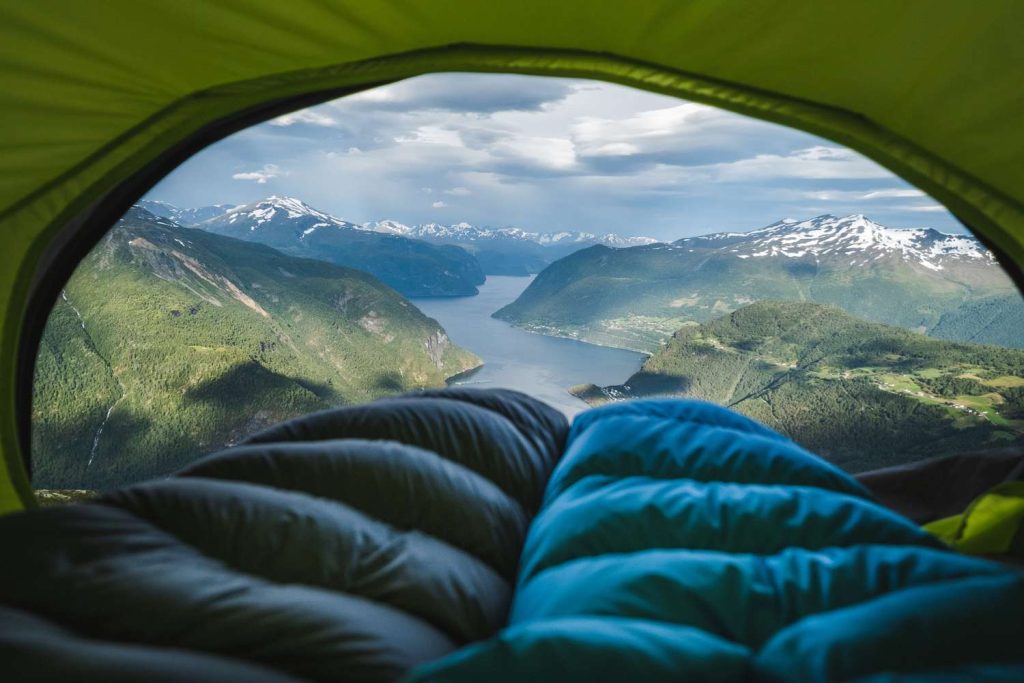
When it comes to choosing a sleeping bag, it can be quite overwhelming. With so many options available, how do you know which one is right for you? Well, don’t worry! In this comprehensive guide, we’ll walk you through everything you need to consider in order to choose the perfect sleeping bag for your needs. Whether you’re a camping enthusiast or just planning a weekend getaway, we’ve got you covered.
First things first, you need to determine the temperature rating that is suitable for your intended use. Are you camping in the cold winter months or in the mild summer weather? Knowing the temperature range you’ll be facing will guide you in choosing the right bag with the appropriate insulation.
Next, consider the size and weight of the sleeping bag. Are you backpacking and need a lightweight and compact bag? Or are you car camping and have more space to work with? The size and weight of the bag will play a big role in your overall comfort and convenience while on your outdoor adventures. So, be sure to take this into account as you make your decision.
In addition, think about the type of insulation you prefer. Down insulation is known for its excellent warmth-to-weight ratio, while synthetic insulation is more affordable and performs better in damp conditions. Each type has its own advantages, so it’s important to weigh the pros and cons to find the one that suits your needs best.
Choosing the perfect sleeping bag doesn’t have to be a daunting task. In our comprehensive guide, you’ll find all the information you need to make an informed decision. From temperature ratings to size and weight considerations, we’ve got you covered. So, stay tuned and get ready to sleep soundly on your next outdoor adventure!

This image is property of www.macpac.co.nz.
A Comprehensive Guide to Choosing the Perfect Sleeping Bag
If you’re an outdoor enthusiast or an avid camper, choosing the right sleeping bag is essential for a comfortable night’s sleep in the wilderness. But with so many options available on the market, it can be overwhelming to know where to start. Factors such as temperature rating, insulation type, sleeping bag shape, and other important features all play a role in finding the perfect sleeping bag for your needs. In this comprehensive guide, we will take you through the key factors to consider, provide valuable information on different types of sleeping bags, and offer tips on how to take care of your sleeping bag.
Factors to Consider
Temperature Rating
One of the most critical factors to consider when choosing a sleeping bag is its temperature rating. The temperature rating indicates the lowest temperature at which the bag will keep you warm. It is important to note that temperature ratings are not standardized across all manufacturers, so understanding how they work is crucial.
Understanding Temperature Ratings
Sleeping bag temperature ratings typically fall into three categories: comfort, lower limit, and extreme. The comfort rating represents the temperature at which an average adult woman can sleep comfortably, while the lower limit rating indicates the temperature at which an average adult man can sleep for eight hours without feeling cold. The extreme rating, on the other hand, represents the temperature at which a woman can survive for six hours without risk of death from hypothermia.
Choosing the Appropriate Rating
When choosing a sleeping bag, consider the expected weather conditions during your camping trip. If you’re camping in cold environments, opt for a bag with a lower temperature rating to ensure warmth and comfort. Alternatively, if you’re camping in warmer conditions, a bag with a higher temperature rating might be more suitable.

This image is property of www.muchbetteradventures.com.
Insulation Type
Another crucial factor to consider when selecting a sleeping bag is the type of insulation used. Insulation plays a vital role in retaining body heat and keeping you warm throughout the night. The two main types of insulation commonly used in sleeping bags are down and synthetic insulation.
Down Insulation
Down insulation is often considered the gold standard in sleeping bag insulation. It is made from the soft feathers found underneath the outer feathers of ducks and geese. Down insulation provides excellent warmth-to-weight ratio, is highly compressible, and offers superior insulation in cold temperatures. However, it can be quite expensive and loses its insulating properties when wet.
Synthetic Insulation
Synthetic insulation, made from polyester fibers, is a popular alternative to down insulation. It is more affordable, retains its insulating properties when wet, and dries quickly. Synthetic bags are also hypoallergenic and easier to clean. However, they tend to be bulkier and less compressible than down bags, making them less suitable for ultralight backpacking trips.
Hybrid Insulation
Hybrid insulation combines the benefits of down and synthetic insulation. These bags feature both types of insulation strategically placed to offer the best of both worlds. Hybrid bags are an excellent choice for backpackers and campers seeking optimal warmth, compressibility, and affordability.
Sleeping Bag Shape
The shape of a sleeping bag plays a crucial role in determining its thermal efficiency, comfort, and versatility. There are three main sleeping bag shapes to consider: mummy shape, rectangular shape, and semi-rectangular shape.
Mummy Shape
The mummy shape is the most common and popular sleeping bag shape. It is narrower at the feet and wider at the shoulders, resembling the shape of a mummy. Mummy-shaped bags provide excellent thermal efficiency by reducing the amount of empty space inside the bag. They are also lightweight and packable, making them ideal for backpacking trips. However, some people may find the fit too constricting or claustrophobic.
Rectangular Shape
Rectangular-shaped sleeping bags offer a more spacious and comfortable sleeping experience. They provide ample room to move around and allow for better ventilation, making them suitable for warm weather camping trips or for those who prefer extra space while sleeping. However, due to their larger size, rectangular bags are bulkier and less efficient at trapping heat.
Semi-Rectangular Shape
The semi-rectangular shape is a compromise between the mummy and rectangular shapes. It offers a balance between thermal efficiency and comfort. Semi-rectangular bags are slightly tapered towards the feet and have a little more room compared to mummy-shaped bags. They provide a good compromise for campers who want a more spacious sleeping bag without compromising too much on heat retention.

This image is property of www.tripsavvy.com.
Other Important Features
In addition to temperature rating, insulation type, and sleeping bag shape, there are several other features you should consider when choosing a sleeping bag.
Weight and Packability
If you’re planning to go on long backpacking trips, weight and packability are crucial factors to consider. Lightweight and highly compressible sleeping bags are more convenient to carry and take up less space in your backpack.
Sleeping Bag Length and Width
Make sure to choose a sleeping bag that fits your body comfortably. Most sleeping bags come in regular and long sizes, so consider your height and body type when selecting the right size. Additionally, some bags offer various width options for those who prefer more room to move around.
Zipper Design and Placement
The zipper design and placement can significantly impact your sleeping bag experience. Look for bags with two-way zippers for added ventilation or zipper draft tubes to prevent cold air from entering. Some bags also feature anti-snag zippers for seamless opening and closing.
Considerations for Different Purposes
Different camping activities require different types of sleeping bags. Consider the following factors based on your camping needs:
Camping
For casual camping trips or car camping, where weight and packability are not major concerns, rectangular or semi-rectangular sleeping bags are a suitable choice. These bags offer comfort and plenty of room to move around.
Backpacking
For backpacking trips, lightweight, packable, and compact sleeping bags are essential. Mummy-shaped bags are the most popular choice due to their thermal efficiency and portability.
Mountaineering
Mountaineering in extreme conditions requires sleeping bags with a lower temperature rating and excellent insulation properties. Down insulation is preferred in these scenarios due to its superior warmth-to-weight ratio.

This image is property of www.atlasandboots.com.
Budgeting and Value for Money
Deciding on a budget and comparing features and prices are essential steps in choosing the perfect sleeping bag.
Determining your Budget
Consider how often you plan to use the sleeping bag and your overall camping budget. While high-end sleeping bags may offer superior insulation and durability, budget-friendly options can provide adequate warmth and comfort for occasional campers.
Comparing Features and Prices
Take the time to research different sleeping bags and compare their features and prices. Look for reputable brands known for their quality and read customer reviews to help you make an informed decision.
Taking Care of Your Sleeping Bag
To ensure your sleeping bag lasts for years to come, proper care and maintenance are essential.
Cleaning and Storing
Follow the manufacturer’s instructions for cleaning your sleeping bag. Most bags can be machine-washed on a gentle cycle using a mild detergent. After cleaning, store your sleeping bag in a cool, dry place to prevent mold and mildew growth.
Repairing and Maintaining
Inspect your sleeping bag regularly for any signs of wear and tear, such as rips, tears, or broken zippers. Small repairs can be done at home using repair kits specifically designed for sleeping bags. For major repairs or professional cleaning, consult a specialist or contact the manufacturer.

This image is property of www.macpac.co.nz.
Trying Out and Testing
Before making a final decision, it is a good idea to try out a sleeping bag before purchasing.
Renting Before Buying
Many outdoor gear stores offer the option to rent sleeping bags. Renting allows you to try different brands and models to find the one that suits you best before making a significant investment.
Going on a Short Trip
If renting is not an option, consider going on a short camping trip with your prospective sleeping bag. This gives you the opportunity to test its comfort, insulation, and overall performance in real-life camping conditions.
Conclusion
Choosing the perfect sleeping bag depends on various factors such as temperature rating, insulation type, sleeping bag shape, and other important features. Considerations for different purposes and budgeting are also crucial. Taking care of your sleeping bag and trying it out before buying are essential steps in making the right decision. With the information provided in this comprehensive guide, you’ll be well-equipped to choose a sleeping bag that meets your needs and ensures a comfortable night’s sleep in the great outdoors.
